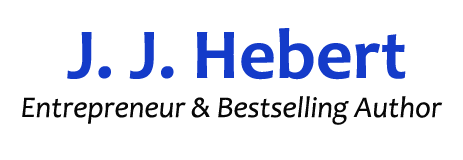As a USA Today, Wall Street Journal and #1 Amazon bestselling author of six books, I feel qualified to write this post on how to self-publish a book. Most of this information has been compiled over the past 15 years while running my self-publishing company, MindStir Media. Obviously, I’d love for you to check out that company and consider it; however, I’m aware that you’re probably looking for general info on publishing a book and not a sales pitch.
So, I’ll try to stay away from being “salesy” as I explain the self-publishing world, including 12 steps you can follow to self-publish your book; often-overlooked mistakes to avoid while self-publishing; how much you should expect self-publishing to cost; and I even include some self-publishing success stories to serve as inspiration.
But before we delve into how to self-publish a book, it’s important to establish why you should self-publish in the first place. Self-publishing a book can be an incredibly rewarding experience, and there are several compelling reasons below why you might want to consider it…
- Why Self-Publish?
- 12 Steps to Self-Publish A Book
- Additional Self-Publishing Tips: Often Overlooked “Don’ts” of Self-Publishing
- How Much Does It Cost to Self-Publish A Book?
- Self-Publishing Success Stories
Why Self-Publish?

Self-publishing offers complete creative control over your work
Traditional publishing houses often have specific expectations and guidelines that may not align with your vision for your book. But as a self-published author, you have the freedom to make decisions about everything from the cover design to the book’s content. You can write the book you’ve always wanted to without having to compromise on your artistic integrity.
Self-publishing can be more financially lucrative than traditional publishing
While traditional publishers do offer advances, they also take a significant cut of the book’s earnings. Conversely, when you self-publish, after the initial costs of editing, cover design, and formatting, the majority of the profits from book sales go directly to you.
Self-publishing allows for faster publication
The traditional publishing route can be a lengthy process, often taking years from manuscript acceptance to the book finally hitting the shelves. In contrast, self-publishing can be accomplished in a matter of months, or even weeks, which means your book reaches readers much quicker.
Self-publishing can be a great way to establish yourself as an author
Even if your ultimate goal is to be traditionally published, successfully self-publishing a book—or several—can demonstrate to publishers and agents that there’s an audience for your work. Many successful authors started their careers with self-publishing.
12 Steps to Self-Publish A Book

1. Idea Generation
Every great book begins with an idea. This could be a story you’ve been itching to tell, a topic you’re passionate about, or a unique angle on a well-trodden subject. Brainstorm ideas and choose one that resonates with you and would interest your target audience. Speaking of target audience, you should spend some time identifying your audience.
2. Planning and Research
Once you have your idea, it’s time to plan out your book. Create a detailed outline with all the key points or scenes. If your book requires factual information, conduct thorough research from reliable sources. This stage will provide a roadmap for your writing process.
How to Outline Your Book:
Outlining a book is a crucial step in the writing process, helping to organize your thoughts and plot structure before you start writing. To begin, decide on the key elements of your story: the main characters, the setting, the conflict, and the resolution. Write down a brief description of these elements, and then expand each into a list or a mind map of the major events or points you want to cover.
With these major points identified, you can now start structuring your outline. Start with a beginning that introduces your characters and the setting, followed by the rising action where you build up the conflict. This leads to the climax, the turning point of your story. After the climax comes the falling action, where the consequences of the climactic action play out, and finally, the resolution, where all loose ends are tied up. Each of these sections should contain several chapters or scenes. Within each chapter or scene, note down what happens, which characters are involved, and what the purpose of the scene is in terms of advancing the plot or character development. Remember, an outline isn’t set in stone; it’s a guide that you can adapt as you delve deeper into your writing process.
How to Create A Book Title:
Creating a compelling book title is a critical task in the writing process. An effective title should capture the essence of your book, tease the reader about its content, and stand out in a crowded book market. Start by noting down key themes, phrases, or words from your book that could potentially make a striking title. These could be significant plot points, unique attributes of your main character, or even a catchy phrase or quote from the narrative.
Once you have a list of potential titles, you can start refining. Consider the genre and target audience of your book – a title that works well for a thriller might not suit a romance novel. Test out your top choices by saying them out loud, typing them in a book cover format, or asking friends and family for their opinions. Remember, your title should not only be intriguing but also give a hint about the story’s genre and tone. It’s a delicate balance between mystery and clarity – you want to pique your readers’ interest, but not mislead them about what to expect from your book.
3. Writing the Manuscript
The most time-consuming part of self-publishing is writing the manuscript itself. Use your outline as a guide and write consistently. Remember, it’s more important to get your ideas down first; you can always refine them later.
If you’re having trouble devising an outline and starting your rough draft, it might be time to consider hiring a ghostwriter. Ghostwriting services can help bring your ideas from head to paper, allowing you to bypass the learning curve. Just keep in mind that professional ghostwriting isn’t cheap. You’re essentially hiring a pro writer to write your book for you, so you should expect to pay professional fees. Some ghostwriters charge by the word and others charge by the hour.
Writing Tips:
- Embrace the Power of Drafts: Don’t aim for perfection in your first draft; it’s supposed to be rough and unpolished. The goal is to get your ideas down on paper. You will refine, revise, and polish in subsequent drafts. This approach takes the pressure off and allows creativity to flow.
- Create Character Profiles: Spend time developing detailed profiles for your main characters, including their backstory, personality traits, motivations, and growth arc. This will help you write more consistently and convincingly about them, making your characters feel more real to your readers.
- Incorporate Sensory Details: Use all five senses when describing scenes. This creates a more immersive experience for your readers, pulling them deeper into your story world.
- Break it Down: Writing a book can seem overwhelming when viewed as a single task. Break it down into smaller, manageable parts—chapters, sections, or even individual scenes. This makes the process less daunting and helps maintain a steady pace of progress.
- End Chapters with a Hook: Keep your readers engaged by ending each chapter with a question, cliffhanger, or a teaser of what’s to come. This encourages them to keep turning pages, eager to find out what happens next.
4. Editing and Proofreading
After your manuscript is written, it’s time to edit. First, do a round of self-edits. Repeat after me, though: Self-editing does not replace professional editing. After you’re done self-editing, hire a professional editor to catch grammar, punctuation, and formatting errors, and to provide feedback on story development. As the content creator, it’s almost impossible to look at your own work objectively; however, a pro editor can do just that and provide valuable feedback.
Now is also the time to write your author bio and book description. A professional editor can also help with these items if you need help. Actually, it’s best to write a few rough drafts of both and run them by your editor to have him/her refine them for you.
5. Cover Design
The cover is the first thing potential readers see, so it needs to be eye-catching. It should also give a sense of what your book is about. You can design it yourself or hire a professional cover designer. Make sure it looks good in both full size and thumbnail, as online shoppers will often see it small first.
Use caution when designing your book cover yourself! Unless you are a professional designer by trade, you run the risk of your cover looking amateurish and deterring readers. DO NOT skimp on your book cover design, as it is your #1 marketing tool for your book. It’s literally the first thing that most potential readers will see when browsing for a new read.
6. Formatting
Your book needs to be properly formatted for each version you plan to release (ebook, print, audiobook). There are specific guidelines for each type. You can learn to do this yourself or hire a professional formatter.
In general, epub is the file type that needs to be created for your ebook. PDF is used for print versions. An mp3 is used for an audiobook.
7. ISBN and Copyright
An ISBN (International Standard Book Number) is necessary if you plan to sell your book. You can purchase one from an ISBN agency. Also, consider registering your copyright to protect your work.
8. Choosing a Self-Publishing Platform
There are many self-publishing platforms, including MindStir Media. Each has its pros and cons. Research each platform to decide which one best suits your needs in terms of royalties, distribution, and control over your work.
9. Book Pricing
Pricing your book correctly is crucial and, even though it is technically considered “meta data,” it’s important enough to have its own category on this list. Why? Because if your price is wrong, it can be like the “kiss of death” to your project. Too high and you might deter potential readers; too low and you might not make much profit. Consider factors like the prices of similar books in your genre, the length of your book, and your goals as an author.
10. Publishing
Once everything else is in place, it’s time to publish. If you’re working with a do-it-yourself self-publishing platform, it’s time to upload your ready-to-publish files, and fill out all necessary information known as meta data (like book description, price, keywords, categories, author bio, etc.). If you’re unsure how to choose categories and keywords for your book, use a tool like Publisher Rocket.
If you’re creating a print version of your book, order a proof copy to be mailed to you prior to “publishing,” so you can review that copy before the public sees it.
With full-service self-publishing providers such as MindStir Media, they’ll handle the meta data for you as well as upload your files and mail you that proof copy for review.
Either way, ALWAYS review your book before making the book available to readers.
11. Marketing and Promotion
Publishing your book is just the beginning. You also need to market it. Create a marketing plan that includes social media promotion, email newsletters, book reviews, and possibly even events like book signings or author talks.
Alternatively, MindStir Media can create a book marketing plan for you.
12. Sales and Distribution
After publication, monitor your book sales and manage book distribution if necessary. If you choose a self-publishing platform like MindStir Media, distribution and sales reporting will be provided. Either way, be ready to render customer service of your own through your own website and social media profiles. After all, it’s not uncommon for potential customers to reach out to an indie author directly prior to purchase. Perhaps they just want to ask you a quick questions prior to ordering through an online retailer. Whatever the case may be, respond to customer inquiries quickly and professionally.
Additional Self-Publishing Tips: Often Overlooked “Don’ts” of Self-Publishing

Don’t rush to self-publish your initial draft
You might be eager to share your masterpiece with the world, but resist the temptation to self-publish your first draft. It’s not uncommon for self-published authors to regret hasty publishing decisions when they start receiving harsh feedback from reviewers about errors and poor writing quality. Don’t be that author. Instead, refine your manuscript through multiple rounds of revisions and self-editing before enlisting the help of a professional editor. Remember Ernest Hemingway’s words: “The first draft of anything is crap.” So, refrain from publishing substandard work.
Don’t rely solely on physical bookstores for sales
While some local bookstores may agree to stock your self-published book, it’s not always the most profitable or easy path. Major chains often demand high discounts and returnable stock, adding layers of complexity and risk to your publishing journey. Therefore, it’s advisable for self-published authors to primarily concentrate on online sales, where the reach is wider and profit margins are typically higher.
Don’t think that merely having an online presence is sufficient
While it’s great that you’re on various social media platforms and have a website or blog, simply having these channels isn’t enough. You need to actively engage with your audience across all your platforms, treating your online presence like a home that needs constant care and attention.
Don’t assume your book will automatically attract readers
It’s natural to believe your book is a must-read, but the reality can be quite different. Initially, aside from friends and family, people might not show interest in your work. To garner attention, you need to put in the effort to network and build relationships. Create social media groups, connect with fellow authors and book lovers, and make a positive impression. This process may be slow and challenging, but remember, sustainable success often requires ditching the ‘quick and easy’ mindset for a focus on relationship-building.
Don’t just publish an ebook
The ebook market still only accounts for about 30% of the total book market, so publishing in ebook-only will severely limit your audience. You’ll be leaving a lot of money on the table by catering only to the 30%. Instead, also publish a print counterpart–hardcover and/or paperback. While you’re at it, fill the remainder of the market by also publishing an audiobook.
How Much Does It Cost to Self-Publish A Book?

Self-publishing a book involves several costs, and depending on the quality and marketability you aim for, the expenses can vary significantly. Based on current data, self-publishing a book in 2024 can cost anywhere between $100 to $5,000. This range accounts for essential services like editing, cover design, formatting, and ISBN registration. For instance, hiring an editor could set you back around $700, while a cover artist may charge between $200-$300. The cost of book proofs alone could range from $100 to $500. Additionally, factors like the number of pages can influence the price of typesetting, with 19% of people paying $1,000-$1,500 and another 16% paying over $1,500 for this service.
Keep in mind that those figures do not include marketing and promotions. If you don’t care about sales and just want to see your book published, you can go the inexpensive route and do most of the work yourself while hiring an editor. However, if you want a marketable product, it’s best to hire professionals for design, marketing and promotions, and that will be closer to the top price ranges outlined above… and then some.
Some self-publishing companies offer bundled services that could provide better value. For instance, MindStir Media offers a package starting at $3299. This package includes cover design, formatting, ISBN allocation, publishing, distribution, mentoring through J.J. Hebert, and marketing through MindStir Media’s social media platforms. The comprehensive nature of the service can often make it a cost-effective choice for authors looking to self-publish their work and promote it without the hassle of coordinating multiple services independently.
For those who want to mimic a traditional book release, you should expect to spend a lot more than $5,000 between book production, marketing and publicity. For instance, you can likely publish for around $5K or less, but then PPC advertising campaigns on Amazon and Facebook, hiring a publicist or public relations firm, partnering with influencers or celebrities, and other effective marketing and advertising options can set you back thousands of dollars by themselves. This is the book “business” after all, so if you want to truly make money on your project you need to allocate a marketing, advertising, and PR budget to compete with the brand name authors out there.
Self-Publishing Success Stories

The world of self-publishing has opened doors for numerous authors, allowing them to share their stories and achieve remarkable success. For instance, LJ Ross, Mark Dawson, and Rupi Kaur are among the successful self-published authors who have made a significant impact in the literary world. In fact, Amanda Hocking, as reported by The Guardian, managed to sell 1.5 million books and earn $2.5 million within just 20 months. Other notable names include Margaret Atwood, E L James, and Andy Weir, who have all demonstrated that self-publishing can indeed lead to widespread recognition and commercial success.
In addition to these well-known figures, there are countless other inspiring self-publishing success stories that deserve attention. Christine M. Whitehead is one such author who has reaped the rewards of self-publishing. She self-published her book “Hemingway’s Daughter” with MindStir Media. What sets her story apart is not just the fact that she became an Amazon #1 Bestseller, but also that she received an endorsement from Mariel Hemingway, Ernest Hemingway’s granddaughter, with the help of MindStir. To have such a prominent figure endorse her work was surely a testament to the quality of Whitehead’s writing.
The success of Whitehead’s book did not stop at hitting the #1 spot on Amazon. It also garnered over 900 ratings and reviews on the platform, as well as worldwide PR coverage. This recognition undoubtedly contributed to its success and demonstrates the potential reach of self-published works. These stories serve as a reminder that self-publishing is not just a viable route to success, but also a platform that allows authors to maintain creative control and potentially achieve global recognition.

